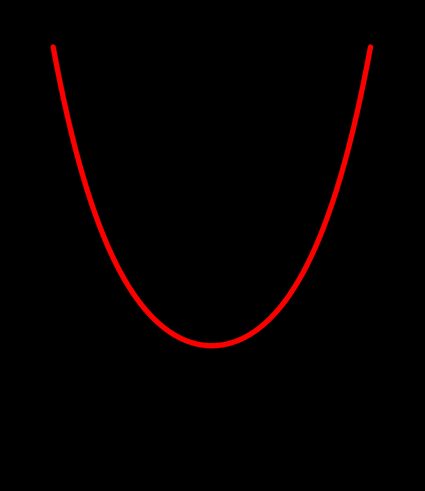Cosh Calculator
Omni's cosh calculator will help you quickly compute the values of the hyperbolic cosine function as well as discover its most important properties. In the short article below, we discuss the following topics:
- What cosh x is and why is it called hyperbolic?
- Can you meet cosh in real life? (Spoiler: yes)
- What does the plot of cosh look like?
We'll also touch upon more advanced topics, discussing the inverse cosh function as well as the derivative of cosh. Ready? Let's go!
Definition of cosh
Cosh is a function in math called hyperbolic sine. We compute its value as follows
As you most surely remember, the standard cosine function has a twin called sine. Hyperbolic cosine has a twin as well! The formula for hyperbolic sine is very similar to that of cosh:
Now, do you remember that by plotting the points (, ) in the standard Cartesian coordinate system, we obtain a circle? Well, if you repeat this procedure with (, ), you'll obtain... a hyperbola as in the picture below. That's why cosh and sinh are called hyperbolic functions!
(Well, more precisely, you'll obtain only the right-hand side part of the hyperbola, but that's enough to justify the name, isn't it?)
Okay, once we know what cosh is and how to compute it, let's plot its values and see what we can discover.
Graph of the hyperbolic cosine
When we plot the values yielded by the formula defining cosh, we obtain the following graph:

It looks a bit like a parabola, but when you plot the two in one picture, you'll clearly see a difference.
🔎 Do you know that you can run into the graph of cosh right there around the corner? Yes, the hyperbolic cosine is exactly the function that describes the so-called catenary curve, which models the shape of a hanging chain. So next time you see it, smile and say Hi, hyperbolic cosine!

Properties of the hyperbolic cosine
Looking at the plot of hyperbolic cosine, we can discover some of its properties :
- cosh is not periodic;
- cosh is an even function, i.e., ;
- cosh is not bounded; and
- cosh is decreasing for x <0 and increasing for x<0; and
- .
As an even function, cosh is not a bijection, and so we cannot determine the inverse function right away. First, we need to restrict cosh to a part of its domain where it is bijective. For instance, to positive values. In the next section, we'll discuss how you can calculate the inverse of cosh.
What is the inverse cosh function?
The inverse cosh function is called arcosh, and its formula reads:
Surprised to see a logarithm? Well, you shouldn't be - recall that there are exponents in the definition of cosh!
⚠️ Do not confuse the inverse function of cosh with the multiplicative inverse of cosh. The latter is also an important function, called sech. It's formula reads .
What is the derivative of cosh?
The derivative of cosh is sinh, that is, the hyperbolic sine, defined as cosh(x) = (exp(x) - exp(-x))/2. Mind the signs! It's similar to what happens with standard sine and cosine functions, but there is no minus sign in front of sinh!
How to use this cosh calculator
As you can see, this hyperbolic cosine calculator has two main fields: x and cosh(x). It's pretty straightforward to use it, but there are still some tips we want to share:
-
If you want to calculate the value of cosh, simply enter the argument
x, and the value ofcosh(x)will appear. -
If you want to calculate the inverse function of cosh, enter the value into the
cosh(x), and the result will appear in the fieldx. Remember that:- The valid arguments of the inverse of cosh are the numbers greater than or equal to 1; and
- The result will be positive. The opposite number yields the same value of cosh, but the function must be restricted before it can be inverted.
-
Finally, if you want to calculate the values of the derivative of cosh, you need to expand the 'Other hyperbolic functions' section. Several other hyperbolic functions will appear, among them sinh, which is exactly the derivative of cosh.
Relevant Omni tools
Happy with the hyperbolic cosine calculator? Hungry for more knowledge? Omni can serve some delicious bits of mathematics! Staying on the hyperbolic functions page of the menu, we offer the following delicacies:
FAQs
Is cosh the same as cos-1?
No, cosh stands for the hyperbolic cosine function, which is different from (yet related to, in some sense) the standard cosine function (cos). The notation cos-1 is a bit ambiguous and may denote, depending on the context, the inverse cosine function (arccos(x)) or the multiplicative inverse (1/cos(x)). Neither of them, however, is the same as cosh!
How do I find cosh in a calculator?
To compute cosh(x) with a basic calculator:
- Check if your calculator can find exponents. If not, try a different tool or search for an online cosh calculator.
- Determine
exp(x)and store the result (use the memory of your calculator or a piece of paper). - Compute
exp(-x)and store the result. - Compute
exp(x) + exp(-x). - Divide the result by
2. This is your answer!
How do I calculate cosh 0?
We have cosh 0 = 1. To arrive at this result, you can use any of the following methods:
- Use the definition of cosh: cosh(0) = (exp(0) + exp(-0))/2 = 2 / 2 = 1.
- Use the identity cosh2x − sinh2x = 1 along with the fact that sinh is an odd function, which implies sinh(0) = 0.
- Read the answer from the graph of the hyperbolic cosine function.
- Use an online cosh calculator.